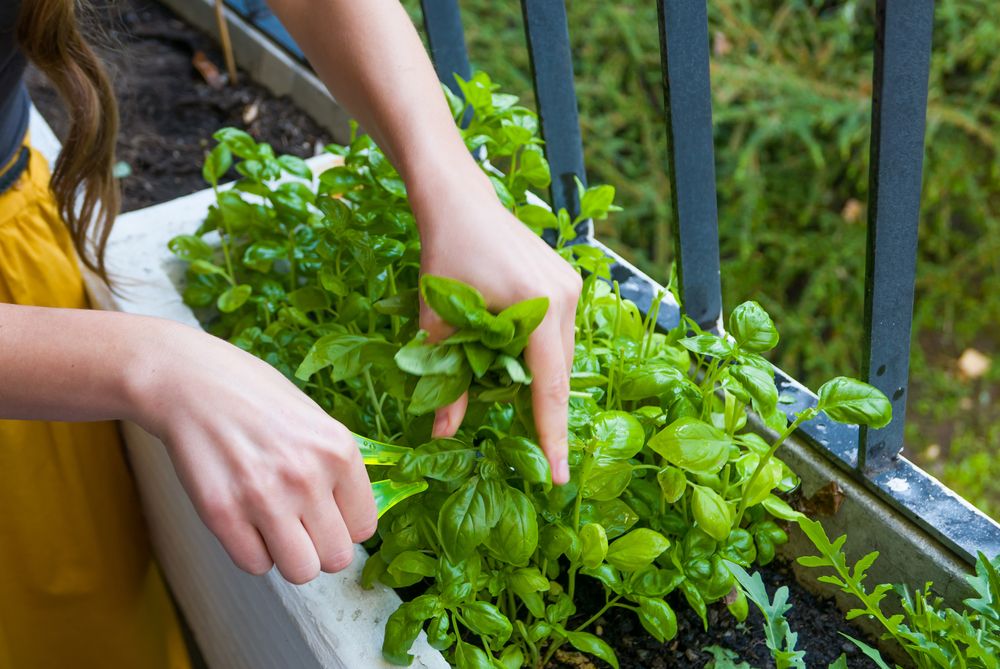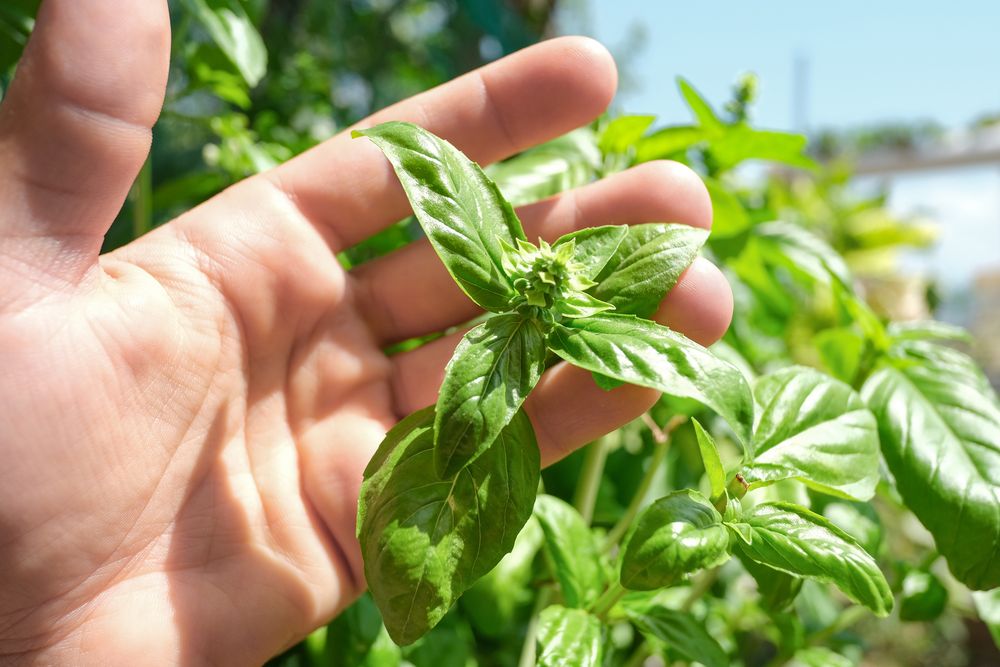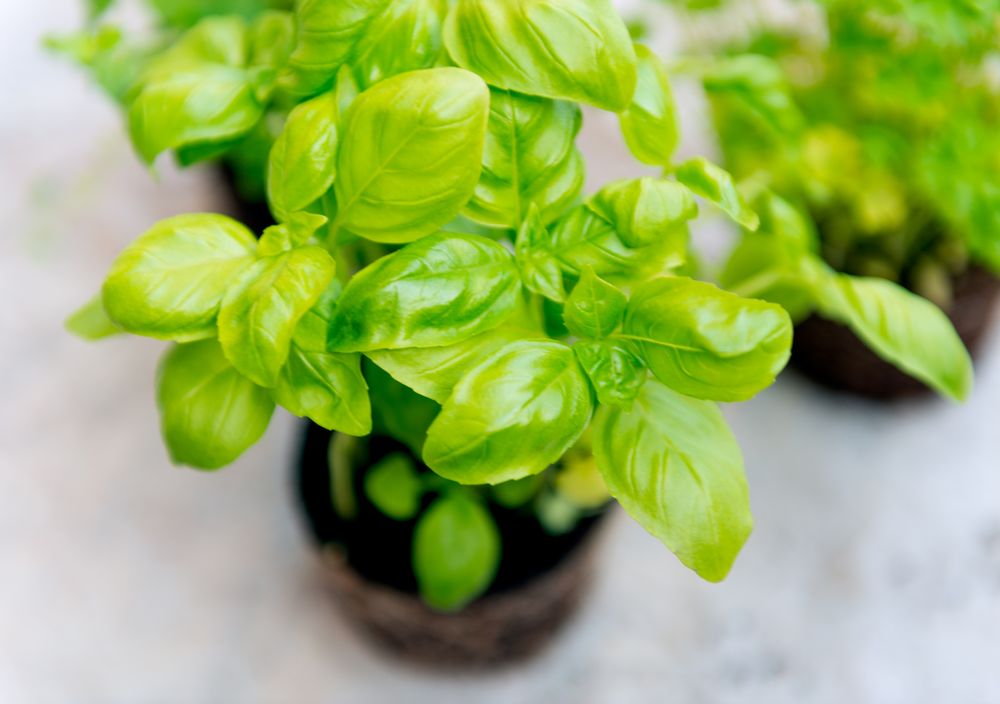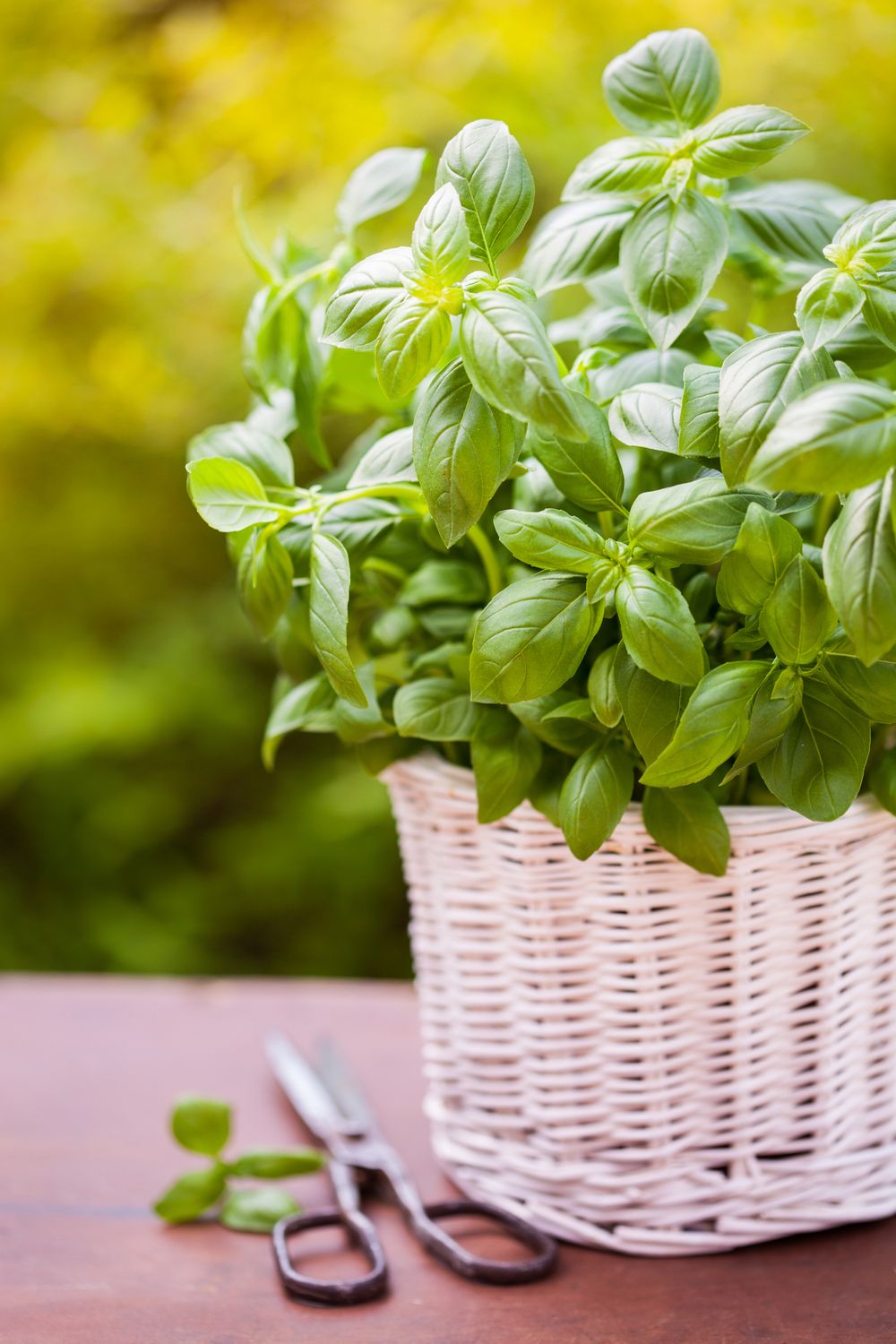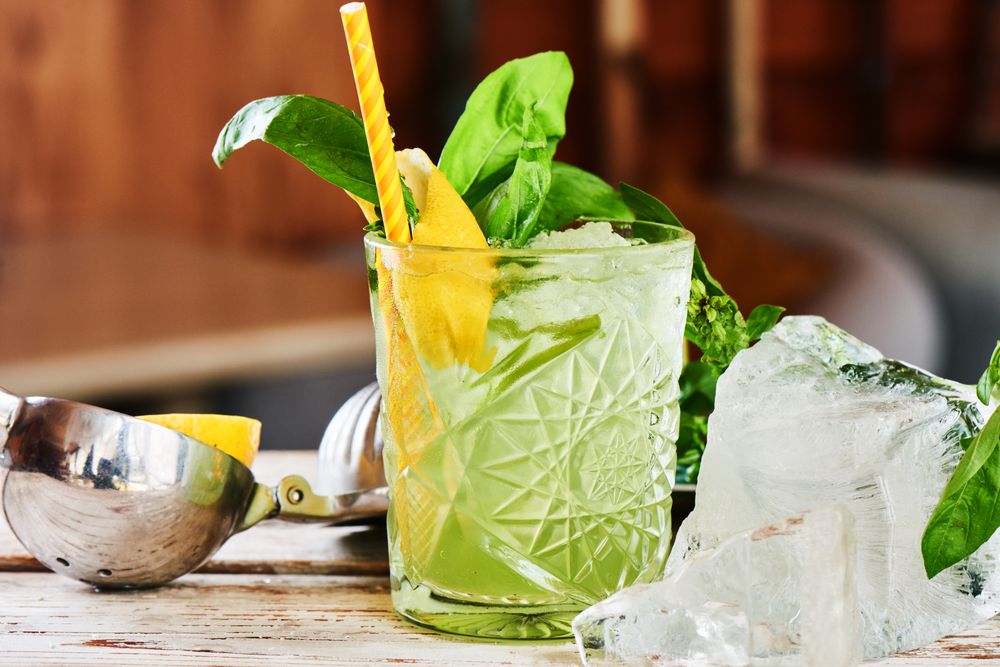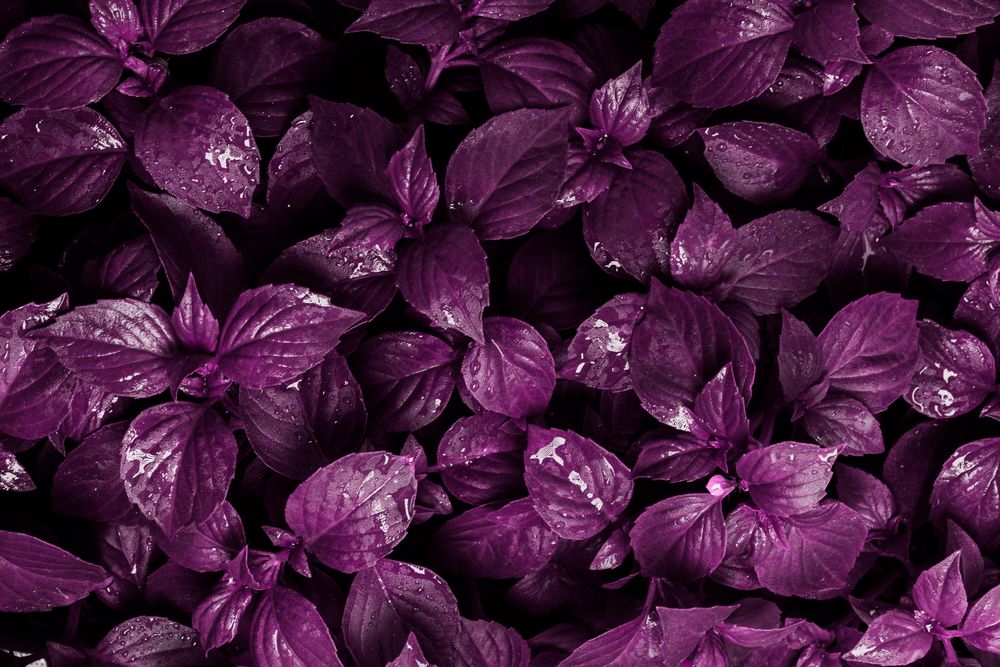Basil Plant Care – How to Grow and Harvest Basil at Home
Basil is a delicious and versatile herb that can be used in many recipes. Growing basil is easy, as long as you follow the correct steps. Keep reading to learn all about basil plant care.
Basil is used in various cuisines worldwide and has many medicinal properties.
Although you can buy the basil herb from any grocery store, it’s better to grow it in your garden so that you have year-long access to fresh basil and use it whenever your recipe calls for basil.
If you’re interested in growing basil at home, this article about basil plant care is for you. It teaches everything there is to know about growing, harvesting, and caring for the basil plant.
Let’s begin by learning general information about the basil plant, including its uses and varieties.
Basil Plant 101
A member of the mint family, basil (Ocimum basilicum) is native to the tropics and subtropics of Africa and Asia. But, as is the case of many other plants, basil migrated to new territories and can be now found in every supermarket across the globe.
The basil plant grows as a perennial in zones 10 and 11, producing new aromatic leaves every spring. If you live in a cooler zone, you can grow basil as an annual and sow the seeds yearly to create lush green plants.
When researching basil plant care, it’s important to note that a mature basil plant averages 1-5 feet.
The leaves are the most important plant of the herb and reach up to 4 inches, depending on the basil variety (more on this in the following section). As for the color, the leaves may be dark green, purple, or green with a purple tint.
The basil’s flowers are usually small and white. It’s best to harvest the leaves before the flowers pollinate because the plant will focus its resources on producing seeds, thus stopping the growth of new leaves.
In the next section, let’s discover the basil types.
Types of Basil
The following are the four types of basil, together with a brief description and cooking suggestion:
- Sweet Basil is the regular basil you can find in the local grocery store. It has medium-sized, round, and dark-green leaves. The herb has a sweet aroma that works well in lemonade and cocktails.
- Purple Basil has about half the amount of antioxidants you find in green tea. It’s best to use purple basil for making tea, especially after a heavy meal to filter the free radicals floating in the bloodstream.
- Green Ruffles Basil has green and wavy leaves with ruffled edges. The aroma and flavors are mild, which makes this basil type ideal for salads.
- Thai Sweet Basil has small leaves with pointy tips. This basil variety is quite spicy, so it works with many dishes, especially stir-fries.
In the next section, let’s find out what you can use basil for.
Basil Uses
The following are examples of ways to use basil:
- In Italy, basil is a symbol of love, and gifting it to a person shows how passionate you are about them.
- The Middle Ages didn’t overlook the power of basil and advised against inhaling the aroma of a fresh leaf, else a scorpion would grow inside one’s skull as a result.
- In Ancient Greece, the only way you could get basil to grow fast was to hurl obscenities at it. That must have left many herbs in deep trauma.
- More ancient myths surrounding basil revolved around the herb’s ability to turn into a scorpion if left under a pot overnight.
- Basil leaves are quite popular in cocktails and add just the right amount of flavor to any drink you come up with.
- Mix a few fresh herb leaves into a jug of lemonade to enjoy a refreshing drink on a summer afternoon.
- Purple basil leaves are packed with antioxidants and have always been used as medicine.
- The steam of a few crushed basil leaves can cure headaches.
- Basil infusions help treat acne.
In the following section, let’s find out all about growing basil.
How to Grow Basil in 11 Easy Steps
The two ways to grow basil are with seeds or from a cutting. The seeds are easier to get online or in stores. But getting your hands on a cutting of a mature plant can be difficult unless your neighbor grows the herb and lets you take a sample.
Growing basil in pots is possible, as long as the pots are deep enough to accommodate the long taproot of the plant.
The following describes the exact steps for growing basil from seeds:
- Fill a shallow tray with sterile seed growing medium about 6 weeks before the last frost.
- Dip the tip of your finger in the medium to make a shallow hole and drop a seed in it. Cover the hole with soil and firm it.
- Plant 2 to 3 seeds per cell.
- Water the tray enough to get the medium moist without disturbing the soil covering the seeds.
- Place the tray on a heat mat and set the temperature to 80 degrees F (27 degrees C).
- Cover the tray with a plastic sheet to maintain humidity levels.
- Keep the medium moist until the seeds germinate after about 7 days.
- Remove the plastic sheet and allow the seedlings to germinate.
- When the seedlings have 2 sets of true leaves, thin them out, leaving just one plant per cell.
- When the seedlings grow about 6 sets of leaves, pinch off the top leaves to encourage bushy growth.
- Transplant the plants to the garden when the weather warms up or you can keep each plant in its own deep pot.
In the next section, let’s see what it takes to care for the basil plant.
How to Care for Basil
The following are tips and tricks for ensuring basil plant care regarding the soil, water, light, humidity and temperature, feeding, and pests and diseases:
Soil
The basil plant needs rich, well-drained soil. So it’s always a good idea to turn up the soil in the garden before transplanting the seedlings.
Amend the soil with perlite and organic materials to improve its texture and drainage. This will make feeding the plant redundant, especially if you’re growing it as an annual. And you wouldn’t have to worry about the soil pH too much.
The good news about basil is that, unlike other plants, it doesn’t care whether the soil is acidic, alkaline, or neutral. So you can have pH levels between 5.0 and 8.5 without hurting the herb or impacting the flavors of the leaves.
Water
When it comes to watering the basil plant, you must reach the taproot of the herb without over-watering the soil. To do this, you have to water the plant deeply in the early morning and let the well-drained soil push the water deeper.
To maintain the moisture in the soil longer, cover the bed with a 2-inch layer of mulch. You can use dried leaves or straw and replace the mulch regularly before it rots. Don’t let the mulch come in contact with the base of the plant to avoid fungal infections and bacterial diseases.
Light
Basil is a tropical plant, so it thrives in full sun. So make sure to grow it in a south- or west-facing sunny spot. It should get at least 8 hours of sunlight during the spring and summer.
When growing basil indoors, place a grow lamp next to the tray and keep it on for at least 12 hours a day.
Light deprivation can impact the aroma and taste of the leaves, especially with the sweet basil and Thai sweet basil varieties.
Humidity and Temperature
Basil seeds need soil temperatures between 75 and 85 degrees F (24 and 30 degrees F) to germinate.
After the seedlings develop a few sets of true leaves, you must maintain that same temperature and pay attention to the air humidity.
To maintain both the temperature and humidity around the plants, consider using row covers.
Row covers protect the basil herb from sudden drops in temperature and any chilly winds. Keep the covers raised and don’t let them touch the leaves of the plant. At night, when the temperature falls, the cold row covers could kill the tender leaves if they come in contact with them.
Feeding
If you mix enough organic materials in the soil before transplanting the seedlings, you won’t have to worry about fertilizing the annual basil. But if the plant shows signs of slow growth, you can side-dress it with aged manure and organic compost.
When feeding the basil plant, avoid chemical fertilizers that would stress the roots with their growth spurts and affect the flavors and aroma of the leaves.
Apply the organic compost once a month during the spring and summer. Since the perennial basil needs feeding, you can use the fertilizer at the same rate during the growing season.
Pests and Diseases
Bolting occurs when the summer days become hot and the temperature consistently rises above 90 degrees F (32 degrees C). It causes the basil plant to go to seed, so the current leaves lose their flavor, and new leaves don’t grow anymore.
Bolting isn’t a disease but a natural part of the basil’s life cycle. Still, it’s best to avoid it by regularly deadheading the flowers of the basil herb.
Other diseases that may affect the basil plant include powdery mildew, root rot, and bacterial infections.
As for pests, keep an eye out for aphids since they could damage the leaves beyond repair. To prevent aphids from infecting your basil plant, spray the herb with neem oil. Or you can gently rub the leaves and stems with an alcohol-soaked swab.
In the next section, let’s find out how to harvest basil correctly.
How to Harvest Basil
The following tips and tricks show you how to harvest basil the right way:
- Start harvesting basil leaves as soon as the plant reaches 8 inches tall.
- Pick young and fresh leaves regularly to improve the herb’s growth and vitality.
- Don’t collect more than a quarter of the collective leaves on the plant at a time.
- If you allow the leaves to mature, they will lose some of their sweetness, becoming even bitter.
- You can dry the leaves in a cool room by spreading them on a sheet of paper or a towel and turning on a fan to ventilate the place.
- It’s possible to store fresh basil leaves by freezing them: fill a ziplock bag with the leaves and keep them in the freezer for months.
In the next section, let’s find out more helpful information about the basil plant:
Basil Plant Care (FAQ)
The following area gives answers to common questions about basil plant care:
How to care for basil plants indoors?
To care for your basil plant indoors, place it near a window where it can get full sunlight throughout the day. Ensure the pot has drainage holes and water the soil regularly so that it’s moist but not wet. Don’t let the plant go too long without water – add water when the soil feels dry to the touch).
How long does basil take to grow?
It can take basil several weeks to grow. The basil seeds need about a week to germinate, and the basil leaves will be ready for harvest in about a month.
Why is my basil growing so slowly?
Slow growth is a common basil growing problem. It can be caused by overwatering or underwatering, so be sure to deeply water the plant about once a week. You can also use a liquid fertilizer to encourage growth.
The next and final section summarizes the entire article on basil plant care.
Basil Plant Care (Summary)
To review, it’s not challenging to grow and harvest basil in your home or garden, as long as you follow some decent tips and tricks.
It’s essential to learn a bit about basil varieties and uses so that you can grow the exact type of herb you need for your cooking.
In this article, we have detailed the exact steps for growing and harvesting basil. You have also learned about basil plant care regarding the soil, water, light, humidity and temperature, feeding, and pests and diseases.
What are your best tips and tricks for basil plant care? Leave us a comment in the section below!
